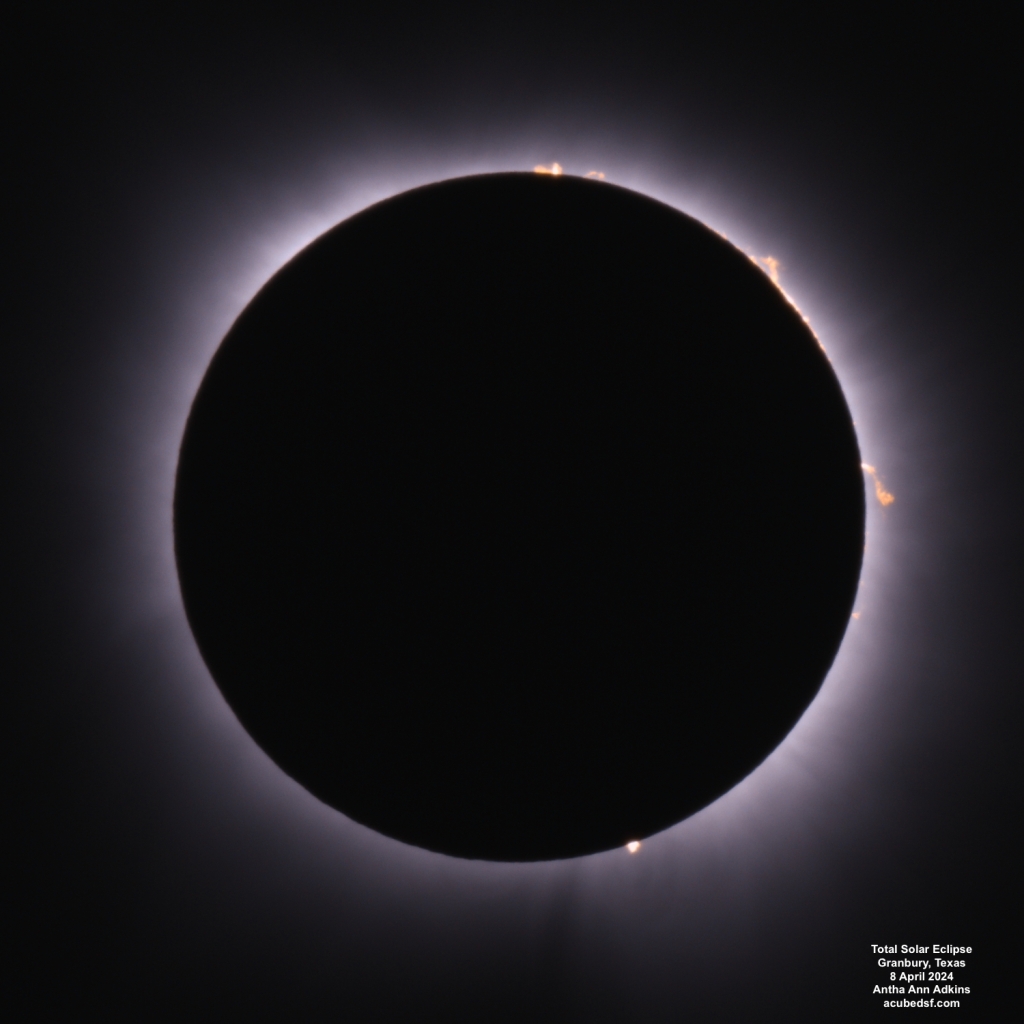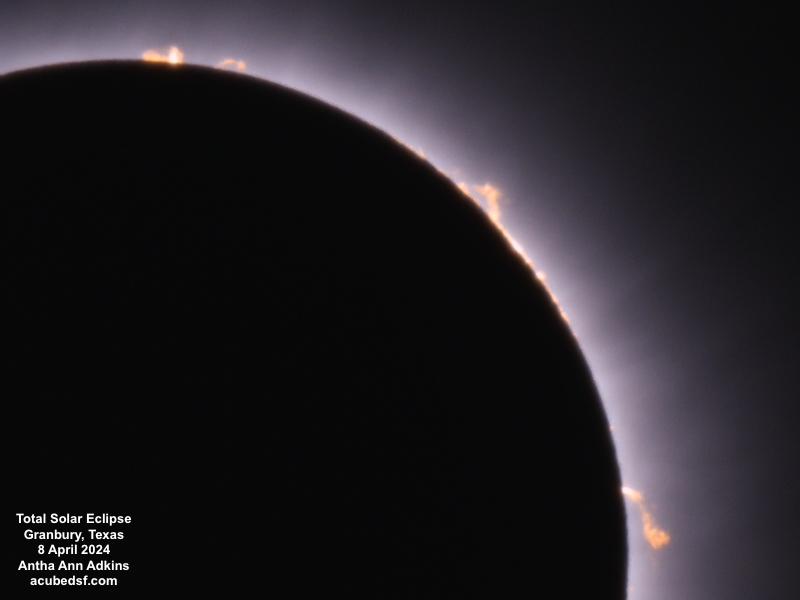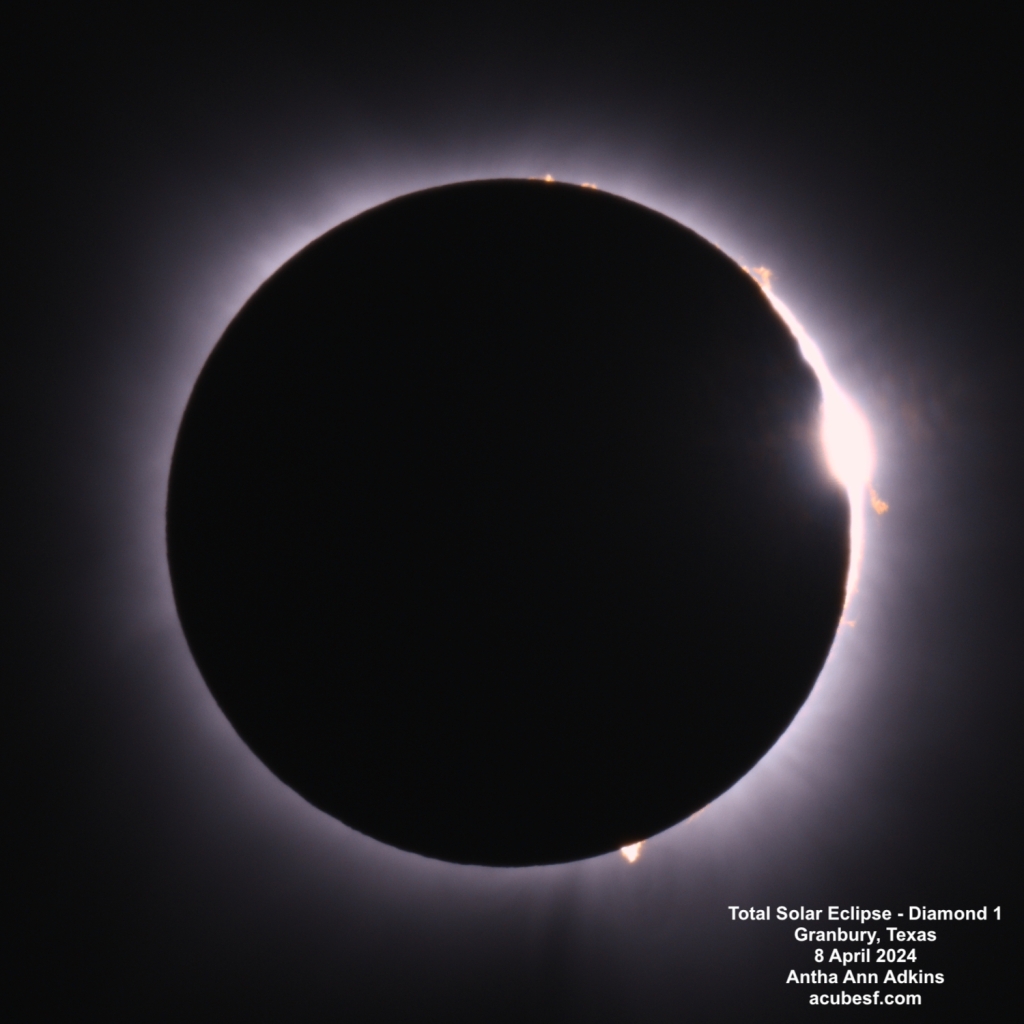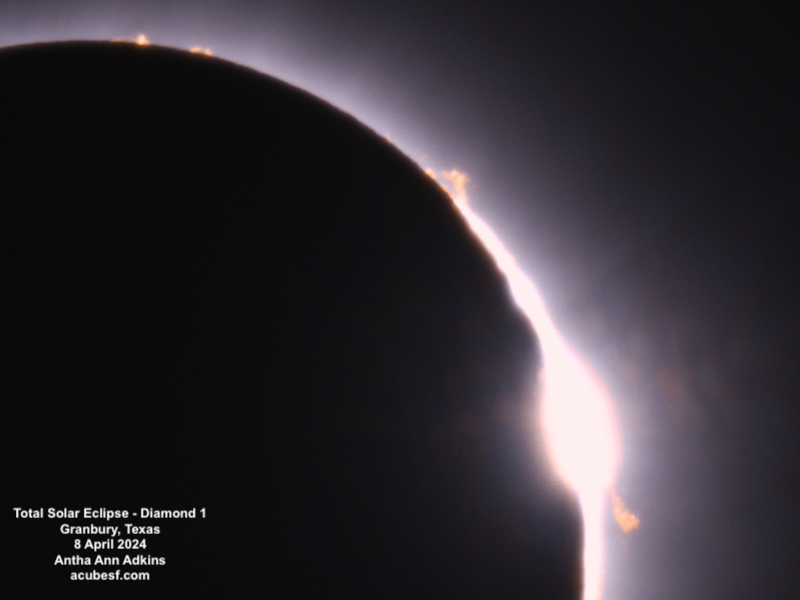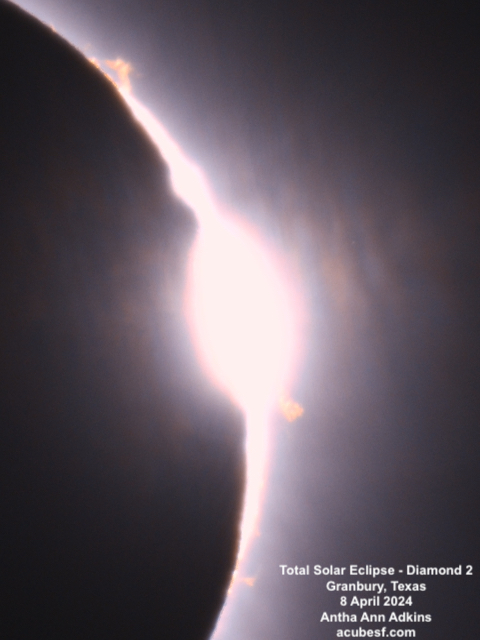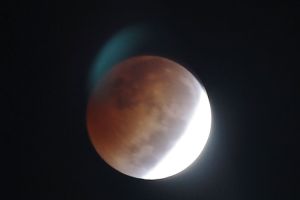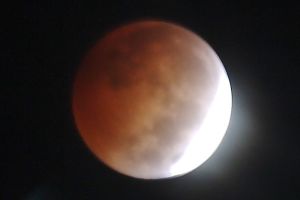Our original plan was to drive to Missouri, visit family, and see the total solar eclipse from Rosecrans Memorial Airport in St. Joseph, MO. When we left home, the weather was predicted to be clear, but that grew worse as we travelled north. By the night before the eclipse, the weather was predicted to be partly cloudy at best, thunderstorms at worst. However, since none of the other local weather looked to be any better, we decided to stick to our original plan.
As we drove to the site, the clouds grew worse, but the traffic was not the expected carpocalypse.
The site had everyone parked in a field in a giant astronomy tailgate party. It was cloudy, but we were hopeful.
Here I am, ready to look at the sun.

Camera geek info:
- Panasonic DMC-GF7 set at f/11, 1/125 second exposure, ISO 200
- LUMIX G VARIO 12-32/F3.5-5.6, set at 12 mm
Here’s what the site looked like.
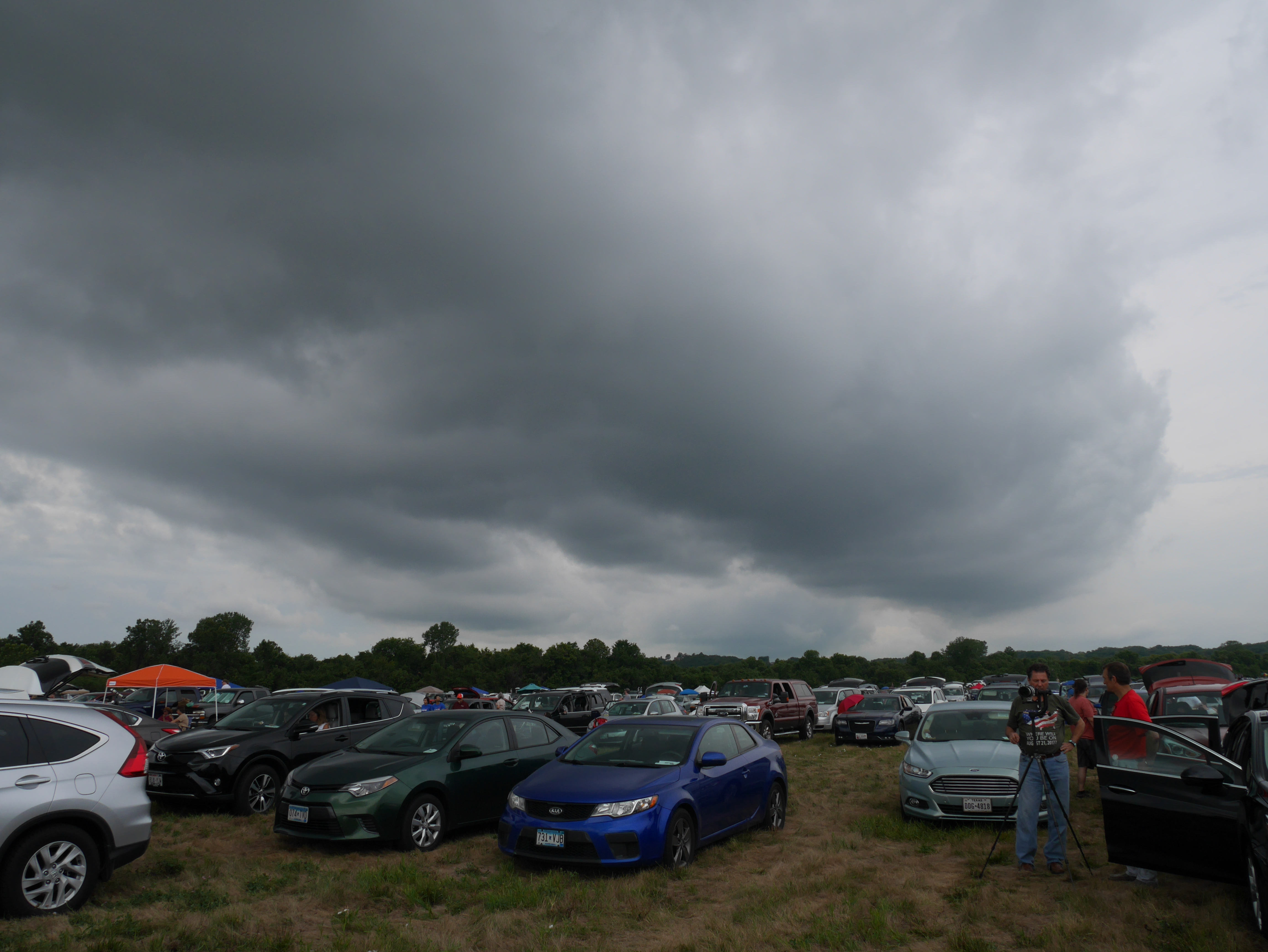
Camera geek info:
- Panasonic DMC-GF7 set at f/11, 1/320 second exposure, ISO 200
- LUMIX G VARIO 12-32/F3.5-5.6, set at 12 mm
I set up my camera and tried to get a picture of the sun through the clouds. With the solar glasses on, I could see the sun, but not the camera. I tried to use live view to find the sun and focus so I wouldn’t be looking at the sun through the lens. Turns out, it was difficult to aim the camera with the telephoto lens at the sun with the solar filter on it using live view. I ended up using my wider angle lens to find the sun with live view and then switching.
Before the eclipse started, I was able to get a picture of the sun with its sunspots.

Time: 11:24
Camera geek info:
- Canon EOS 60D in manual mode set at f/4, 1/250 second exposure, ISO 100
- Canon EF 70 – 200 mm f/4L lens, set at 98 mm, manual focus at infinity
- Tripod
- Cable release
- Homemade Baader Solar Film solar filter
Then it rained. The camera gear and I sheltered in the car.
As the eclipse started, I was able to get another set of pictures of the sun as it went in and out of the clouds.
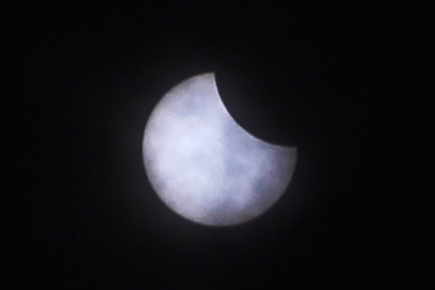
Time: 12:05
Camera geek info:
- Canon EOS 60D in manual mode set at f/4, 1/250 second exposure, ISO 100
- Canon EF 70 – 200 mm f/4L lens, set at 70 mm, manual focus at infinity
- Tripod
- Cable release
- Homemade Baader Solar Film solar filter
Then it rained.
The clouds looked angry, like aliens swarming in the sky.
Camera geek info:
- Canon EOS 60D in manual mode set at f/4, 1/160 second exposure, ISO 100
- Sigma 24-70mm f/2.8 EX lens, set at 24 mm, autofocus
Then it rained again, harder, with thunder. A lot of people started leaving. With totality a half hour away, I thought they’d just end up sitting in traffic and wouldn’t get anywhere better. We stayed. I hoped that the rain would clear enough of the cloud cover that we’d get another view of the sun.
When it stopped raining, I got out of the car.
An exclamation rose up from the crowd around me. Up in the sky, a tiny sliver of sun was visible through the clouds.

Time: 13:03
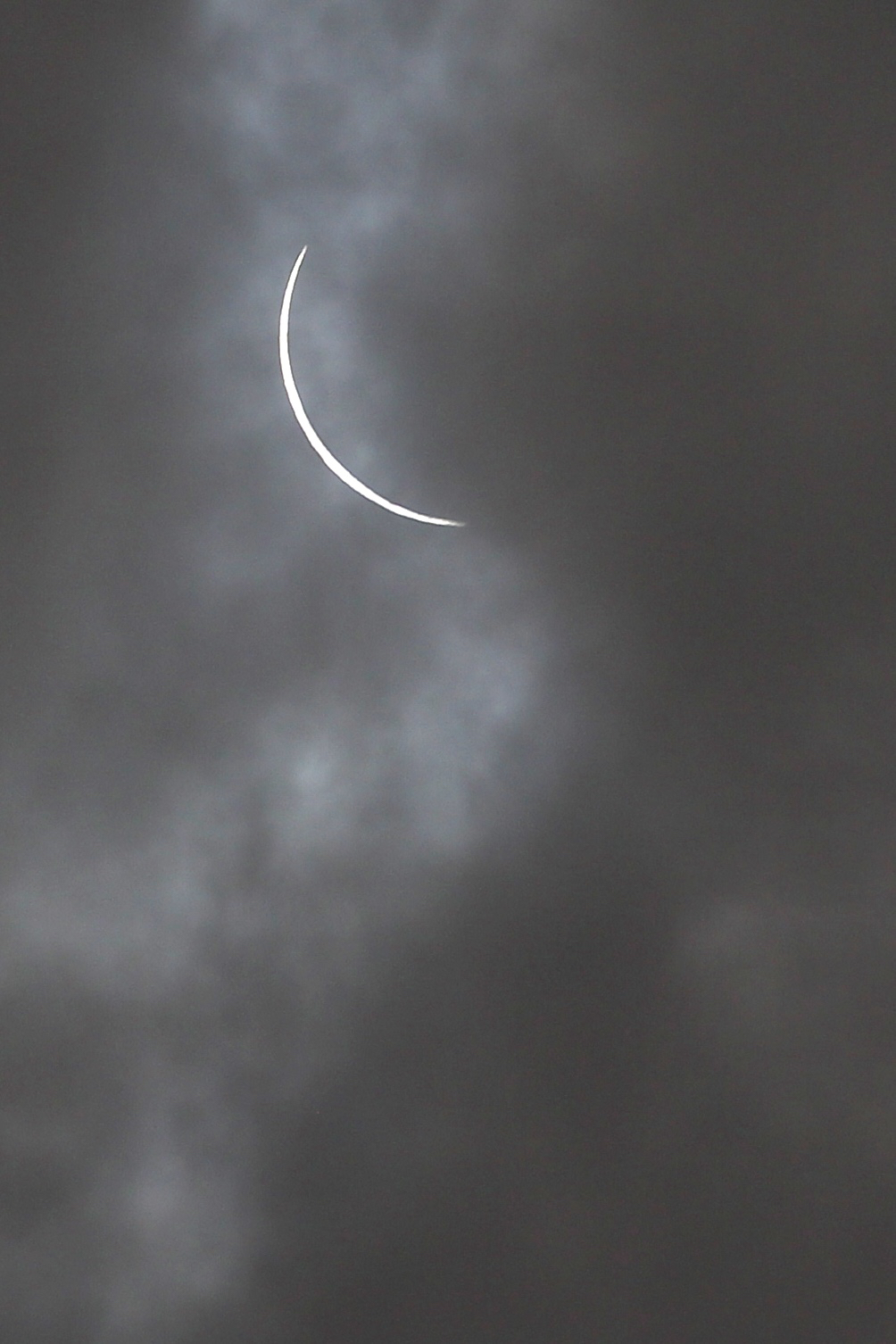
Time: 13:04
Camera geek info:
- Canon EOS 60D in manual mode set at f/4, 1/160 second exposure, ISO 100
- Canon EF 70 – 200 mm f/4L lens, set at 200 mm, autofocus
The sliver went in and out of the clouds.
Then it got dark. And I said, “whoa!” Then it got darker. “Wow!” Then it got as dark as night. “Amazing!!!!!”
For over two and a half minutes, we had darkness in the daytime. But the horizon was a sunset in every direction. In one direction I could see a pink and orange cloud with rain streaking down from it in the sunset, with black overhead and black below. Where we were, it was dark.
I spent some time with my mouth gaping open, admiring the sight.
My pictures of the sunset do not do it justice, as the camera was still set for taking pictures of the sun.
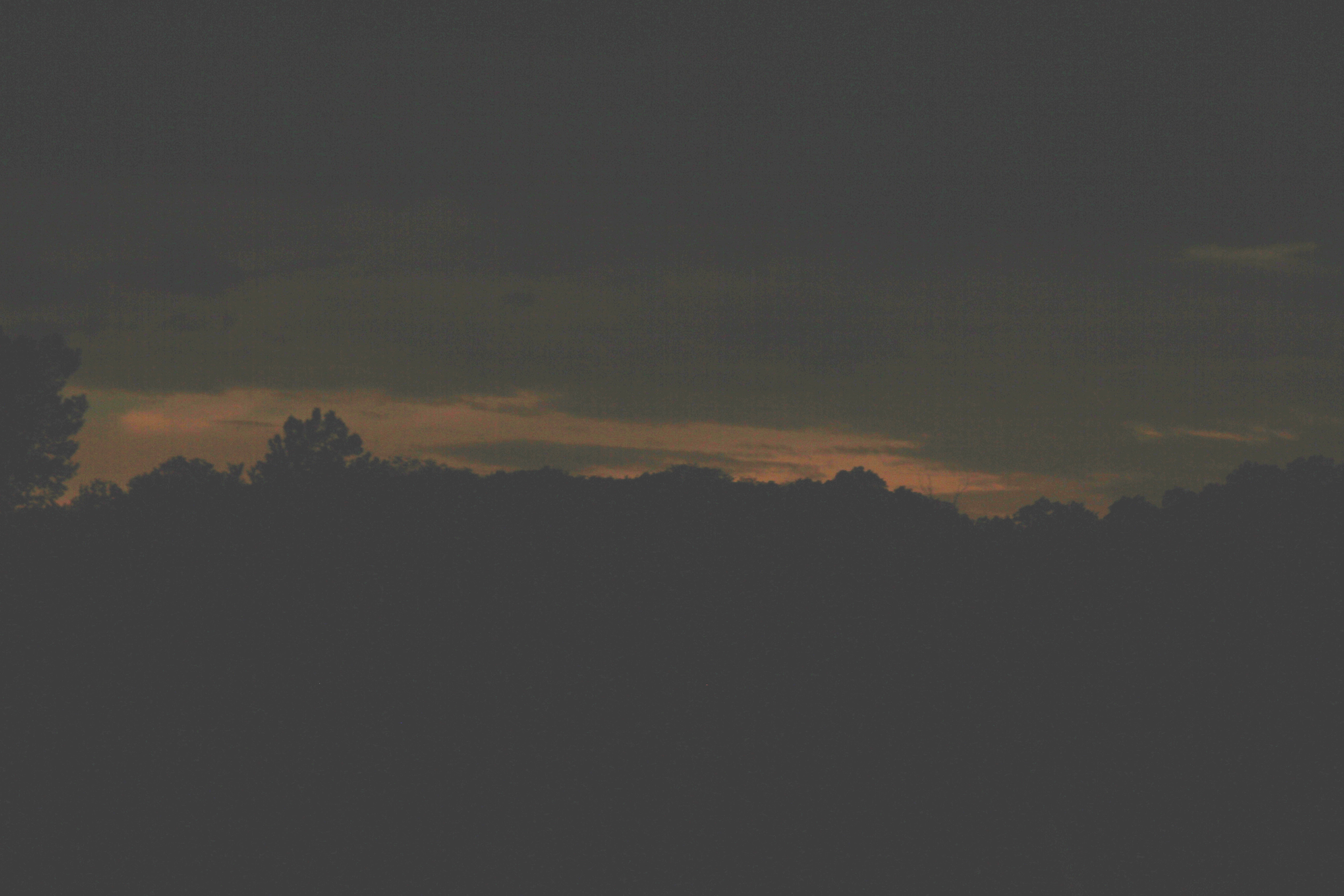
Camera geek info:
- Canon EOS 60D in manual mode set at f/4, 1/160 second exposure, ISO 100
- Canon EF 70 – 200 mm f/4L lens, set at 188 mm, autofocus
Then, after two and a half minutes of darkness, the sun returned. People on the field cheered. People on the bluff set off fireworks.

Time: 13:09
Camera geek info:
- Canon EOS 60D in manual mode set at f/4, 1/25 second exposure, ISO 100
- Canon EF 70 – 200 mm f/4L lens, set at 200 mm, autofocus
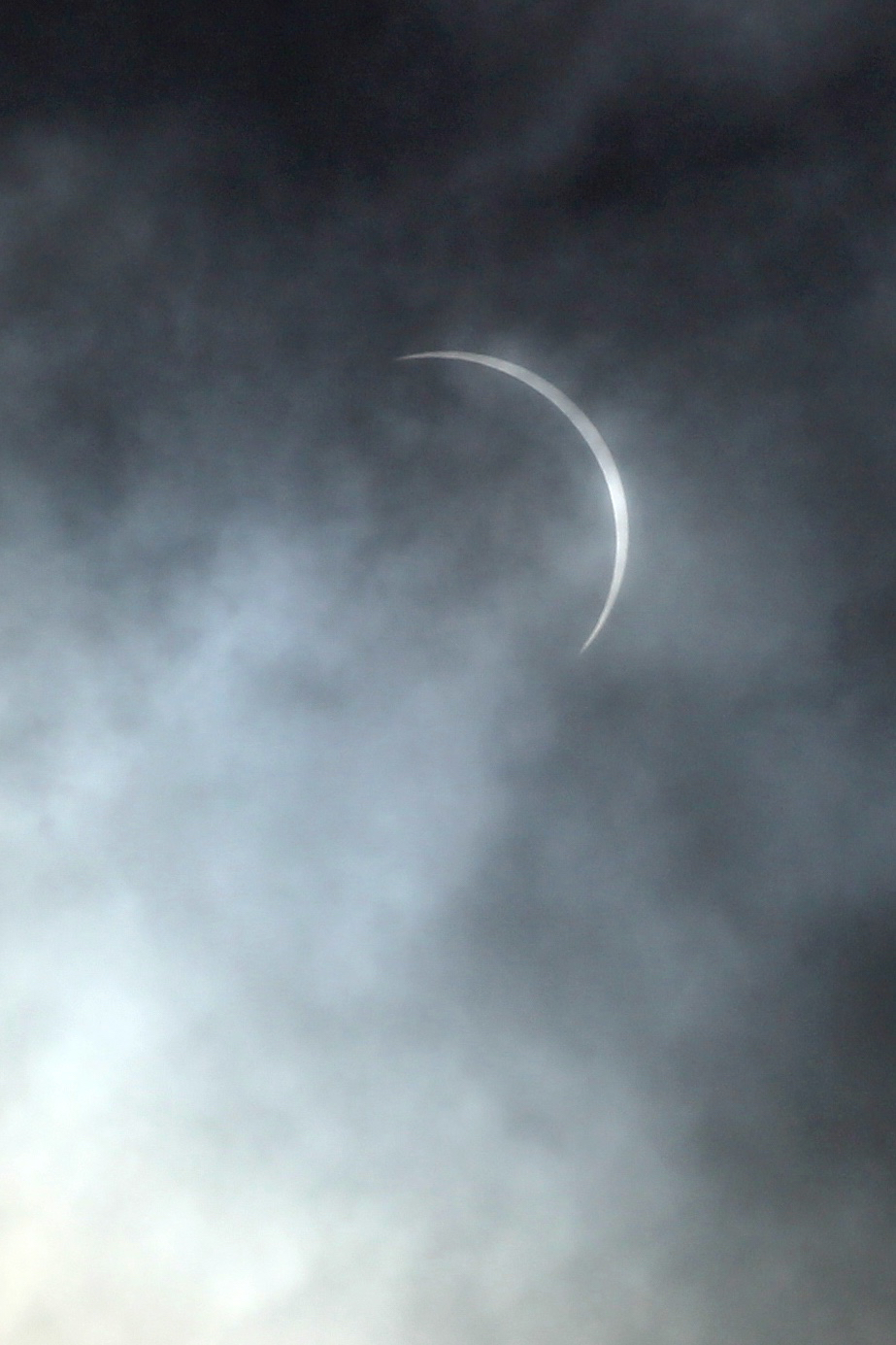
Time: 13:12
Camera geek info:
- Canon EOS 60D in manual mode set at f/4, 1/400 second exposure, ISO 100
- Canon EF 70 – 200 mm f/4L lens, set at 172 mm, autofocus
As the moon slowly uncovered the sun, the clouds drifted away.

Time: 13:38

Time: 13:47
Camera geek info:
- Canon EOS 60D in manual mode set at f/4, 1/100 second exposure, ISO 100
- Canon EF 70 – 200 mm f/4L lens, set at 163 mm, manual focus at infinity
- Tripod
- Cable release
- Homemade Baader Solar Film solar filter
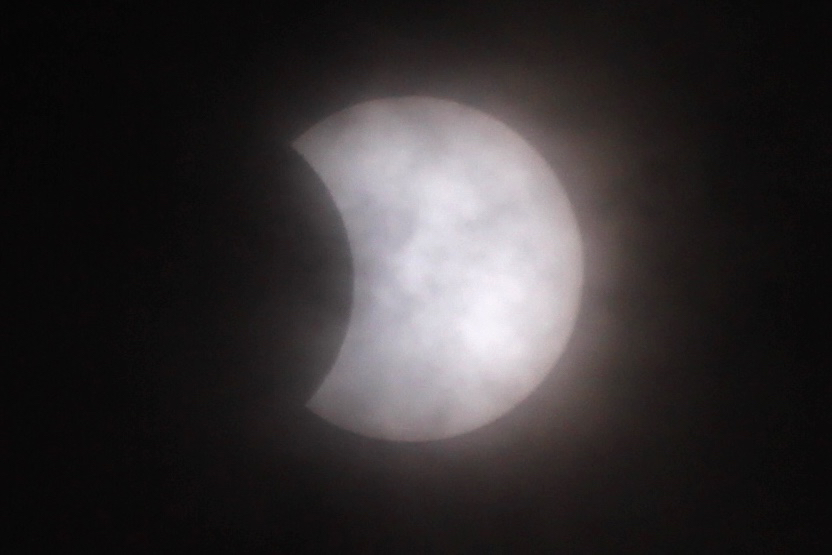
Time: 14:05
Camera geek info:
- Canon EOS 60D in manual mode set at f/4, 1/200 second exposure, ISO 100
- Canon EF 70 – 200 mm f/4L lens, set at 163 mm, manual focus at infinity
- Tripod
- Cable release
- Homemade Baader Solar Film solar filter
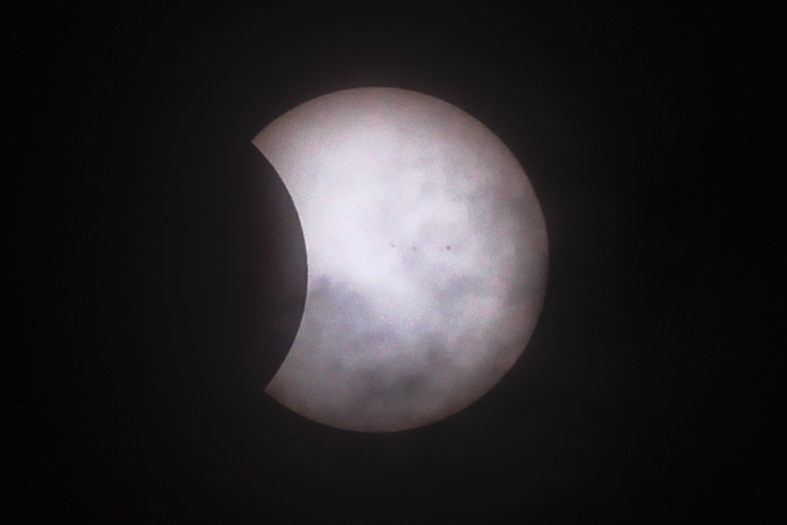
Time: 14:08
Note that the sunspots have rotated from their position before the eclipse!
Camera geek info:
- Canon EOS 60D in manual mode set at f/8, 1/200 second exposure, ISO 100
- Canon EF 70 – 200 mm f/4L lens, set at 163 mm, manual focus at infinity
- Tripod
- Cable release
- Homemade Baader Solar Film solar filter

Time: 14:17

Time: 14:29
Camera geek info:
- Canon EOS 60D in manual mode set at f/5, 1/200 second exposure, ISO 100
- Canon EF 70 – 200 mm f/4L lens, set at 163 mm, manual focus at infinity
- Tripod
- Cable release
- Homemade Baader Solar Film solar filter
I have enough pictures of the second half of the eclipse that I may try to make a time-lapse movie of it.
Note that all of these pictures were taken through clouds, and even with that, the pictures at the end were overexposed, and I could not see the sunspots. For a cloudless day, I’d want to use a much faster shutter speed. And remember to zoom the telephoto lens all the way out. LOL.
In spite of the clouds, experiencing totality was nothing short of amazing. I would not trade my cloudy totality for someone else’s sunny 98%. I look forward to trying this again when the next US total solar eclipse occurs over my home state of Texas!
